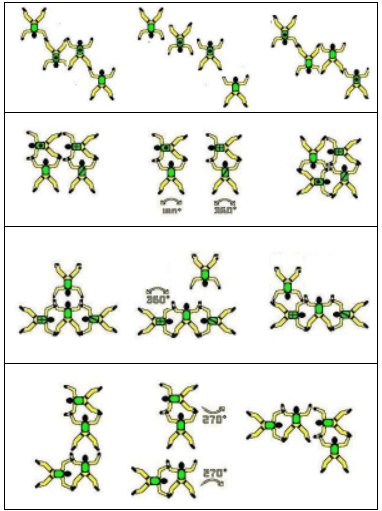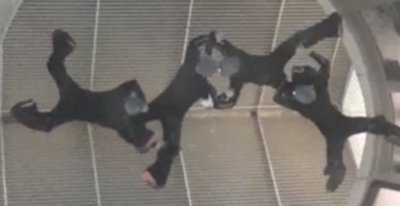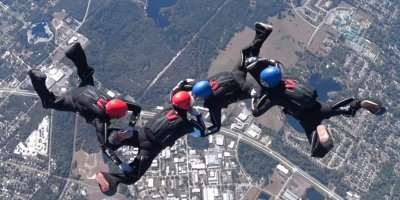
National
Skydiving
League
226 Pecan Street
Deland FL 32724
tel: (386) 801-0804
© 2003 - 2025
All Rights Reserved


226 Pecan Street
Deland FL 32724
tel: (386) 801-0804
© 2003 - 2025
All Rights Reserved


That's a good thing (the quiet and peaceful past). It used to be a good thing. At least I believe that.
The current 4-way dive pool had its last adjustments at the beginning of the 2011 season, when two of the 22 blocks were fine-tuned (Block 1) or replaced (Block 13). I was opposed to changes of the dive pool for a very long time, as I believe in consistency for rules in sports and there were dive pool changes on a regular basis between 1985 and 2007.
The FAI/IPC officials promised that the last change in 2011 would only be a necessary adjustment and I could live with that. In fact, I have been grateful ever since, as they really left the dive pool alone for a very long time, which has been seven years - until now.

Now we are back in motion and I remember the days of dispute. I had brought the "forgotten people" to readers’ attentions when I posted commentary about dive pool changes in 1996:

"But what about the rest? They just succeeded with a huge investment of time, money and effort to master Star - Star (used to be Block 6) with a vertical technique. Now, they started to really enjoy doing that move. And finally, they could start to improve their point average. Improving the point average is the biggest satisfaction for a competitive team, the highest goal.
"And then, just like that, the block is gone. History. Replaced by Zipper-Star (used to be Block 12). New time and money to spend for the new block. Shaquille O`Neal (former U.S. basketball star) doesn't have to worry that once he will have mastered the free throws they will eliminate them. It's worth the effort, Shaq.
"Believe me, these forgotten 90% of the competitors are not very happy with the changes. The problem is that FAI/IPC communicate only with the top teams. The experts in Formation Skydiving competition always have their own ideas and requests for new and different moves.
"Some supporters of the changes say that the sport needs them to keep it interesting and challenging. Well, the top teams will train and drill the new moves for one week with 50 - 100 free jumps. After that, the new moves will be just as exciting or boring for them as the old ones.
"The whole dive pool was just as exciting or boring in 1985 as it is now in 1996.
"I found it always exciting. Normal teams change the team personnel after about two years at the latest. There are not ![]() many teams around which stay together for a much longer time. New teams and new competitors are coming, old teams and old competitors are going. Thus, teams will have the dive pool challenge all the time anyway - whether there are changes or not."
many teams around which stay together for a much longer time. New teams and new competitors are coming, old teams and old competitors are going. Thus, teams will have the dive pool challenge all the time anyway - whether there are changes or not."
Well, that was 1996. What's different now? Not much - to my understanding. The rules, including the dive pool, should be made for the 90% of the participants in the sport. By the way, that's why the National Skydiving League introduced different categories (AAA - AA - A - RRR - RR - R) to accommodate everybody's progression in 4-way formation-skydiving competition.

Before going into the details, I want to point out one great change this time. The lawmakers used to create the changes almost secretly in the past and then announced them without questions or feedback from the formation-skydiving community. The new changes have now been announced a year before they will become official and there is plenty of time for trying the suggested maneuvers and providing feedback or even protest them.
FAI/IPC used to be an outdoor organization, responsible for aeronautical sports like people jumping from planes. They changed their minds after wind tunnels began to grow like mushrooms and some of them hosted great indoor competitions. I don't really understand yet how the Federation AERONAUTIQUE Internationale (FAI) or its International PARACHUTING Commission (IPC) feel responsible for indoor competition. USPA (United States PARACHUTE Association) has made it very clear that they don't feel responsible for or connected to the indoor world. I leave the answer to that question to the reader.

The reason the current Block 1 (Snowflake - Snowflake) and Block 13 (Offset - Spinner) have to be removed has nothing to do with outdoor competition. They don't fit well into a 14-foot flying chamber (except for some of the junior teams) which is FAI/IPC's hosting choice for their indoor world meets and world cups. That's the reason why neither block has been part of FAI/IPC indoor meets in the young indoor past.
FAI/IPC want these two blocks included in the indoor dive pool and the suggestions of the two new blocks (Block 1: Molar - Molar, Block 13: Mixed Accordian - Mixed Accordian) are based on this goal: FAI/IPC synchronization of indoor and outdoor dive pool.
 That's where the road gets slippery. Many indoor experts make it very clear that indoor and outdoor activities are two completely different worlds and I would not argue that. There are more than enough examples for indoor flyers who will never jump from a plane. And yet they will indirectly influence outdoor rules and dive pools? We are on a slippery road, and there is more to it, like following the Olympic illusion. More on that later.
That's where the road gets slippery. Many indoor experts make it very clear that indoor and outdoor activities are two completely different worlds and I would not argue that. There are more than enough examples for indoor flyers who will never jump from a plane. And yet they will indirectly influence outdoor rules and dive pools? We are on a slippery road, and there is more to it, like following the Olympic illusion. More on that later.
I am curious to see what USPA will do. The board may decide that the current outdoor dive pool is just fine as it has been and they are not involved with indoor events. Very tricky situation, as they still have to work together with FAI/IPC on outdoor competition. I would guess that they will adopt the dive pool changes—what can they do? However, there is a whole year to think it through and talk about it ...